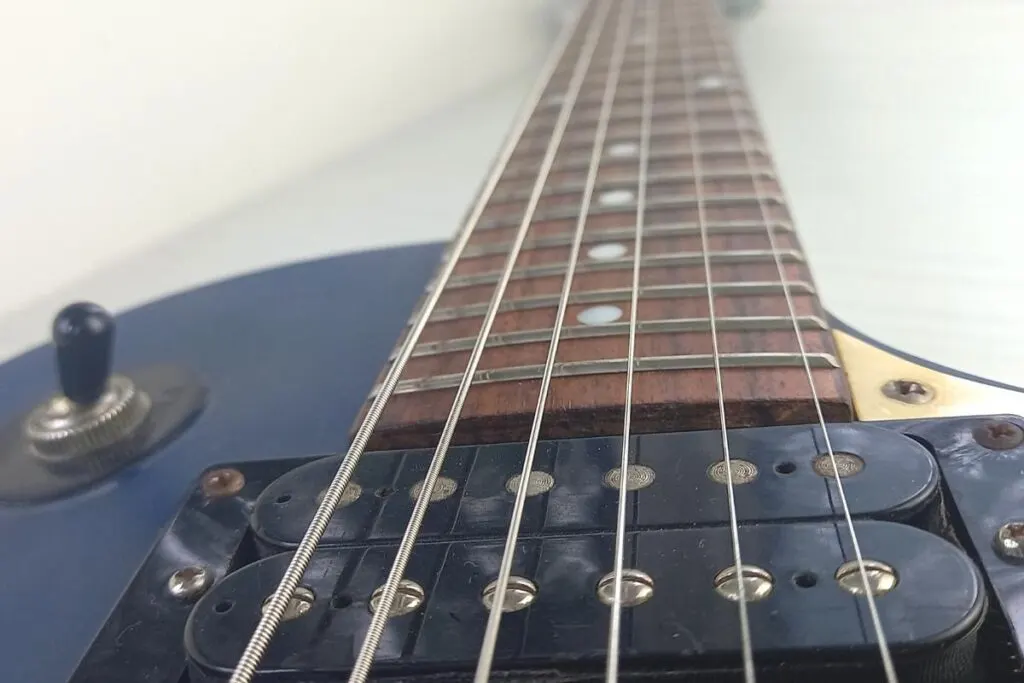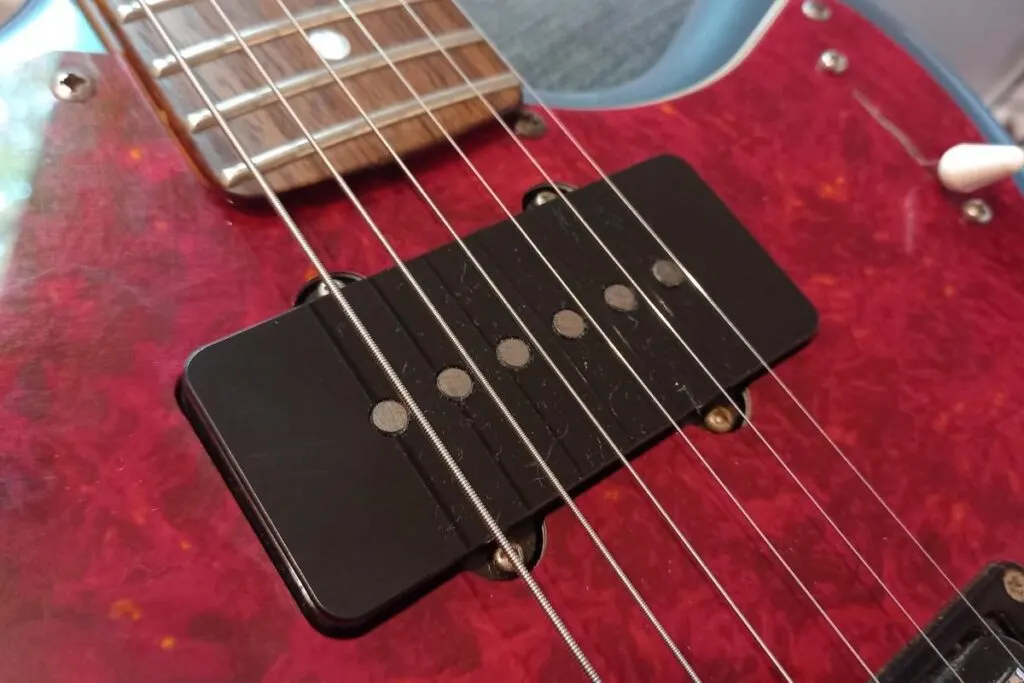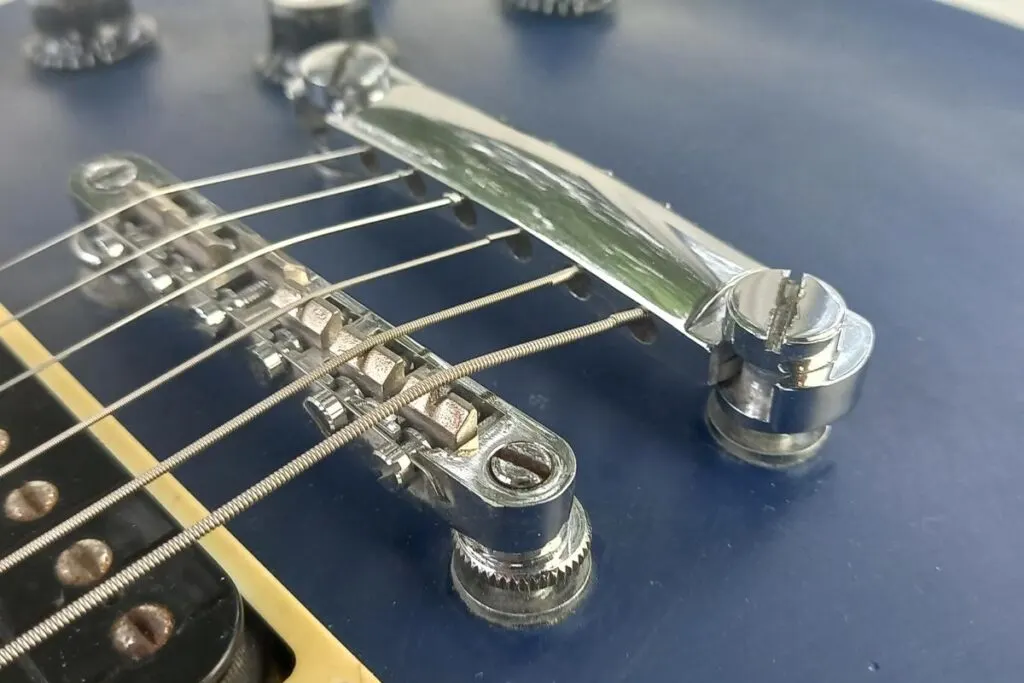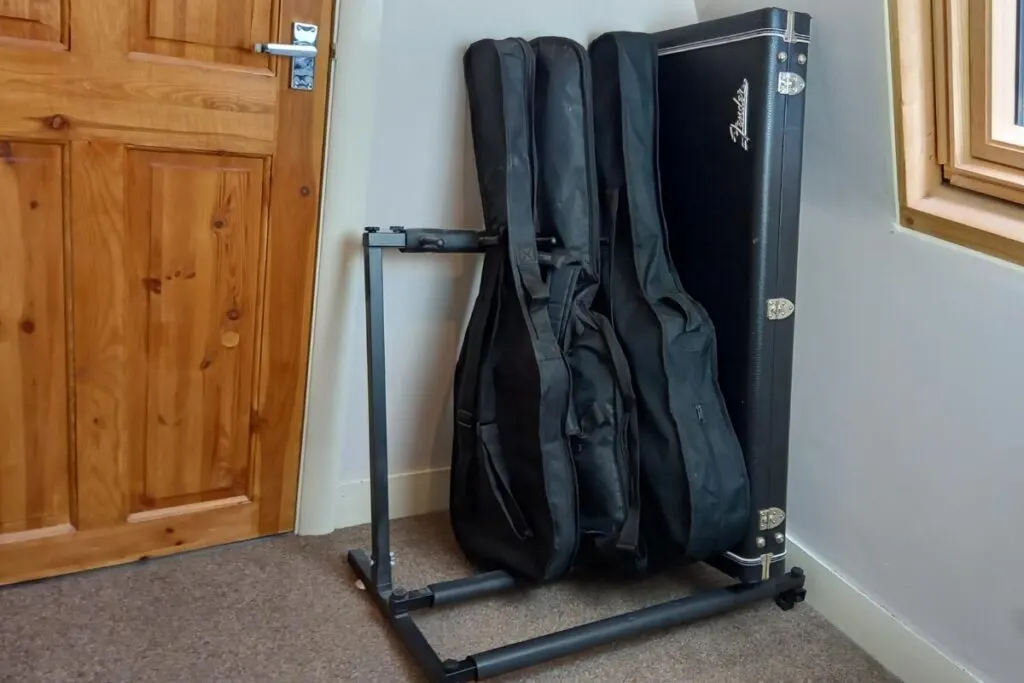When it comes to playing guitar, there’s rarely any rules that are set in stone. How often you should change your strings is no exception.
Factors like how often you play, your style of music, even down to how you store your guitars will all affect how quickly your strings age, and how often they need changing.
But, while there isn’t a “one-size fits all” answer, I’ve noticed some tell-tale signs that I use to decide when it’s time to switch out my old strings for a fresh set.
In this guide, I’ll show you 7 signs that it’s time for you to change your guitar strings. Not only that, but I’ll also teach you how to make your guitar strings last longer! So, not only will your guitar sound better for longer, but you’ll also save some money, too!
Affiliate disclaimer: This page contains affiliate links for products that I’ve tried and tested. As an Amazon Associate I earn from qualifying purchases at no additional cost to you. Learn more here.
How often should you change your guitar strings?
Depending on who you ask, you’ll probably be advised to change your guitar strings every 3 to 6 months. Sooner if you play a lot, less often if you don’t. But, this advice is always just a guideline. It doesn’t take into consideration anything about you as a player.
- How often are you playing?
- What type of music are you playing?
- Do you play in live venues, or just your house?
- Do you live in a humid country?
I could go on, but there are so many different factors that affect when you need to change your guitar strings that it’d be wrong for me to give just one answer, because it varies so much from person to person. What works for me might not suit you, and vice versa.

On the guitars I play often, I change the strings about every 3 months. On the ones I rarely play, I can get away with not changing them for longer. But, how do I know when to change them? I look for the signs that the strings are getting old.
So, instead of “how often”, it’s much more valuable to learn how to know when you should change your strings. That way, you’ll know when you need to change your strings.
Here’s a list of 7 signs that it’s time to change your guitar strings for a new set.
1. The strings feel stiff
The older a guitar string is, the stiffer it becomes. If you’ve ever played a guitar with older strings, you’ll know exactly what I’m talking about. It becomes a lot harder to fret and bend notes. It feels like the entire guitar is pushing back against you.
This loss of flexibility is caused by a combination of built up dirt, rusting, and an effect called “strain hardening”. Strain hardening (or “work hardening”) is where the internal structure of a metal changes from constant movement, and so it becomes harder.
It’s a very gradual process that happens to the core of your guitar strings over time. But it’ll happen quicker the more you play, and the more you bend.
When your strings start feeling stiff, it’s time to freshen them up.
Newer guitar strings have more flexibility (unless you’re using very heavy gauge strings!), and are much easier to use and play with, especially with techniques like string bending and vibrato.
2. The strings look or feel dirty
Another clear sign that your guitar strings are on the way out is when they start looking or feeling dirty.
When you play your guitar, oil, dirt and sweat transfers from your hands onto the strings. Over time, this forms a layer of sticky residue that will make your strings look dull and feel rough.
But it’s not just playing that causes your strings to get dirty. Moisture in the air will slowly cause your strings to tarnish and rust, and dust can get on your strings, making the grime problem worse. This is one of the reasons that I always store my guitar in their cases.

Your guitar strings should always look bright, shiny, and have no visible signs of dirt or rust. They should feel smooth when you run your hands up and down them.
If your guitar string shows signs of rust, corrosion, or dirt, then it’s time to change them. Don’t bother trying to clean the rust off – it’s much simpler just to replace the strings entirely.
3. Your guitar sounds dull
If your guitar tone has lost its sparkle – it’s because the strings need replacing. When you replace your strings, you’ll notice that they sound much brighter compared to the old strings, with more high-end frequencies.
Older guitar strings often sound flat or dry. I think they sound tired, like they’ve had the life sucked out of them. This change in tone is caused by dirt and rust changing how the strings vibrate and produce sound. Essentially, the string no longer vibrates as it should, so it doesn’t produce the right overtones.
And it’s not just the tone that’s affected, either. Older guitar strings have less sustain than newer strings. This is also caused by dirt and grime building up on the string, which reduces its ability to ring out. The end result is a string that sounds underwhelming and dull.
If you prefer your strings to sound brighter, then you’ll need to change your strings whenever they start to sound flat, which will vary from person to person. For those of us who prefer duller sounding strings, it means you can get away with changing your strings less often!
Top tip: If you want fresh strings with a naturally duller tone, try using flatwound guitar strings. These strings have a rich, mellow tone without the brightness of roundwound strings. They’re popular amongst jazz musicians.
4. Your guitar doesn’t stay in tune
Old guitar strings are notorious for being difficult to tune. No matter how many times you tune them up, they always sound too sharp or flat!
According to Fender, old strings are one of the leading causes of guitar tuning issues. The lack of string tension means that they don’t come into contact with the frets as intended, which makes them sound wrong.

To me, this is one of the most crucial factors in deciding when to change your guitar strings. We can agree or disagree about when a string sounds old, or feels too stiff, but everyone knows when something’s out of tune – especially an audience!
If you’re noticing that your strings are no longer staying in tune, it’s time to get them replaced.
Top tip: If your strings aren’t that old but your guitar still isn’t in tune, then try setting up your guitar’s intonation. That means how in tune the notes are across the whole neck.
5. The strings are damaged
From being hammered against the frets, to being struck by your guitar pick – your guitar strings go through a lot. Over time, they’ll begin to become worn and damaged.
This type of damage causes weak points on the string which, coupled with the fact that older strings become more brittle, is one of the main reasons that guitar strings snap.
But they don’t have to be old to need replacing. Some strings can get damaged accidentally, or just be defective. The second that you notice any signs of damage, it’s time to retire them.
My rule is that if you notice any of the other signs on this list, the strings will likely also be damaged in some way. So it’s worth replacing them now, rather than dealing with a broken string later on!
6. You want to change the feel of your strings
Your strings don’t have to be old to need changing. Personal preferences change, so if you find that your current strings no longer suit you, then swap them out for something different!
Like most people, I started learning guitar on thinner guitar strings. They were great for building up my hand strength, but when I switched to a shorter scale guitar I found them a bit too “floppy”. So, I began experimenting with different thicknesses. Even now, some 15 years later, I still go back-and-forth on what feels right to me!

If you find your strings too loose, or too stiff, then try experimenting with different string gauges to find what’s right for you.
7. You want to change the tone
String gauge doesn’t only affect the feel of a guitar. A lighter gauge string will sound brighter compared to a heavier gauge string (just take a listen to the top and bottom strings on your guitar!)
If you want to switch up your tone, consider trying out a different string gauge.
As a general rule, heavier gauge guitar strings are thicker and harder to bend than lighter gauge strings. They’ll sound darker and more mellow as a result. They also have a higher string tension, which makes them great for drop tuning, making them a great choice for rock and metal guitarists.
Not only this, but different string types also affect the tone. With electric guitars, the two main types are roundwound and flatwound strings.
The most common is roundwound, and they’re considered the standard guitar string. The chances are that you’re using roundwound strings right now! They have a round wire that’s wrapped around the strings (most often the lower 3 strings).
Flatwound strings use a flat wire to wrap the strings, and produce a duller sound as a result. They’re a bit more expensive, but they’re great for producing warm jazz and blues tones.
How to make guitar strings last longer
Now that you know when to change you guitar strings, let’s look at some practical tips that will make your guitar strings last longer. Not only will your guitar sound better for longer, but you’ll also save a bit of money on strings!
Keep your hands clean
Dirt, sweat, and oil from your hands is the number one thing that will age your guitar strings. So, it’s important to keep your hands as clean as possible before picking up your guitar.
A quick hand wash before playing your guitar will remove any surface level dirt, so it won’t be transferred to your strings. If you’re playing for a long time, and are sweating, a mid-practice wash is a good idea, too (if you want to be extra safe).
Also, avoid eating food while you’re playing. Oily foods like chips or pizza will grease up your strings in no time. If you want to have a snack, make sure to wash your hands afterwards.
Wipe down your strings before and after playing
Depending on how you store your guitar, it’ll likely have dirt such as dust and sweat from the previous practice session on it. This dirt can build up with fresh sweat during your next playing session, and form a layer of grime.
To reduce the chances of this happening, I recommend wiping down your strings both before and after playing.

You can wipe it down with a simple lint-free cloth, or you can use a product like Fast Frets. Personally, I use a combination of both. I’ll use a lint-free cloth first to remove any surface level dirt. I then apply Fast Frets across the strings to remove any of the more stubborn dirt, and any areas I’ve missed.
Fast Frets is a very cost effective way of extending the life of your strings. Check out the latest price here on Amazon.
Top tip: I don’t recommend using the cloth that comes with Fast Frets, as I find that it leaves little bits of lint on the strings. Buy a separate lint-free cloth!
Try using coated guitar strings
If you want strings that are designed to last a long time, try using coated strings.
Coated strings are designed with a clear layer that acts as a barrier against dirt and moisture. This protects the string from getting dirty or corroding, keeping them usable for longer.
This is a great option for people who sweat a lot, or people who live in a humid climate. Having strings with built in protection means that you don’t have to worry as much about them!
Ernie Ball has a large range of coated guitar strings available, and they’re not that much more expensive compared to a regular set! Check them out here on Amazon.
Store your guitar in its case
The best way to keep your strings clean and last longer is to store your guitar in its case between use.
Putting your guitar in its case keeps it safe from dust and rapid changes in humidity. Both of which will age your strings otherwise. It’ll also protect your strings from accidental damage from knocks or bumps.
And it’s not just your strings that are protected: your guitar is much safer when stored in its case. I’ve covered this fully in my guide on how to store your guitar.

Watch the humidity of your room
High levels of humidity will cause your guitar strings to oxidize, making them rust. This causes them to sound dull and be difficult to play.
A guitar case helps to protect against humidity, but it doesn’t solve the problem. Eventually, the humidity levels inside the case will match the outside, so it’s important to make sure that your guitar is kept in a humidity controlled room.
If your room is too humid, try moving your guitar to another room. If that’s not an option, look at getting a dehumidifier. This will suck out excess moisture in the air. Try and keep the humidity levels between 45 and 55%.
Moisture isn’t just bad for your strings. It’s also bad for your guitar’s neck and body, Again, I’ve covered this in more detail in my how to store your guitar guide.
Summary
You should now know exactly when to change your guitar strings. Remember, there’s no set date that works for everyone. We’re all different, and so we’ll all have different needs when it comes to changing our strings.
Keep a close eye on your guitar and recognise the signs for when you need a string change. And try out some of the techniques for making your strings last longer – it’ll help you get even more life out of them!
Leave a comment down below and let me know how often you change your strings!
Related questions


Conor is a music producer, multi-instrumentalist, and all-round enthusiast from the UK with over 15 years of experience. He’s the founder and sole-content creator for the roundtable audio blog and YouTube channel.
